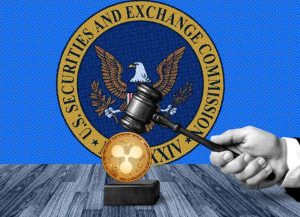Basel Banking Committee proposes stricter guidelines to classify stablecoins as less risky than unsecured cryptocurrencies
2 min readThe Basel Committee on Banking Supervision (BCBS) wants to tighten rules to classify stablecoins as less risky assets than Bitcoin (BTC) and other unsecured cryptocurrencies.
In a recently published consultation paper, the international standard setter proposes 11 rules to regulate banks’ exposure to crypto assets, with areas such as loan term, liquidity and reserves are highlighted.
According to the report, the committee is seeking changes to the requirements for how banks can include stablecoins to which they are exposed and is encouraging technical changes of the standard for understanding crypto assets.
All stakeholders are expected to comment on the proposed changes via the website by March 28, 2024. All contributions will be published unless they are marked as confidential.
Changes to stablecoin policies
The composition of reserve assets has been pushed by multiple regulators over the years to protect investors by ensuring that all assets are fully hedged. The new proposals include repayment risk testing and additional safeguards in times of extreme stress.
An important change is the emphasis on the maturity of reserve assets, as short-term assets carry lower risk than longer-term counterparts in the event of crises that require mass withdrawal of assets by users. To maintain the shorter maturities, banks must set a maturity limit for individual reserve assets and an average limit for a pool of assets.
“The reserve assets used to cover redemptions may pose various risks that call into question the ability of the stablecoin issuer to meet holders’ expectations of redemption when necessary.”
For longer-term assets or when short-term assets are limited, the reserve assets must be over-collateralized to cover a decline and avoid losses.
Second, the reserve assets would need to be invested in high-quality products such as the central bank reserve for which the stablecoin issuer is approved and high-quality marketable securities of central banks.
Regulators emphasize liquidity
Additionally, the draft states that stablecoin issuers should transition to assets with lower volatility to prevent future asset losses and ensure price stability.
Other requirements include active and large markets, so reserve assets should be traded in larger markets with sufficient liquidity. Stablecoin issuers are expected to have a risk management system in place to monitor credit, market and concentration risks.
In addition, disclosure requirements are required for authorities to assess the risk factors and proper analysis as required by several regional regulators. a>
“The standard also requires that reserve assets undergo an independent external audit at least annually to confirm that they are consistent with disclosed reserves and consistent with the mandate. These requirements are tightened to require that disclosed reserves be audited by an independent third party at least semi-annually.”
Crypto exchanges with the lowest fees 2023






